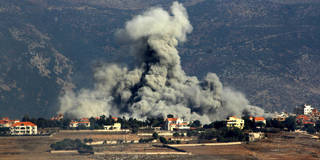For almost a year, many hoped that Israel's war with Hamas would not spread beyond Gaza. But attacks on northern Israel by Hezbollah in southern Lebanon, and now the decision by both groups' backer, Iran, to fire ballistic missiles at Israel, has made a regional conflict all but inevitable.
WASHINGTON, DC – The Middle East resembles nothing so much as an earthquake zone with multiple fault lines. This week, fighting increased sharply along one of those lines, Israel’s border with Lebanon, and more specifically, between Israel and Hezbollah. This in turn triggered activity along another fault line, as Iran, Hezbollah’s backer, retaliated by firing ballistic missiles at Israel, which has vowed to respond severely. Less clear is what will come next, either along these particular fault lines or elsewhere in the region.

WASHINGTON, DC – The Middle East resembles nothing so much as an earthquake zone with multiple fault lines. This week, fighting increased sharply along one of those lines, Israel’s border with Lebanon, and more specifically, between Israel and Hezbollah. This in turn triggered activity along another fault line, as Iran, Hezbollah’s backer, retaliated by firing ballistic missiles at Israel, which has vowed to respond severely. Less clear is what will come next, either along these particular fault lines or elsewhere in the region.